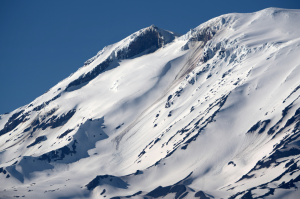Climate Matters: Haven’t there been a lot of La Niña winters lately?
Many regular readers of this column are aware of the effects of La Niña, and variations in the El Niño-Southern Oscillation (ENSO) in general, on the overall weather of the Pacific Northwest during the cool season.
Read moreDetecting La Niña in a Changing Climate
Global oceans have been very warm since 2023
It is no secret that global Sea Surface Temperatures (SSTs) have been steadily increasing for decades (Fig. 1) due to climate change. Notably, conditions since 2023 have been considerably warmer (highlighted in yellow on Fig.
ENSO’s Effects on Snow Water Equivalent over the Years
We trust that most everybody interested in the climate variability of Washington state is already aware that El Niño conditions are present in the tropical Pacific. At the very least, discussions of the prospects for the winter of 2023-24 during the last few months have generally included this element.
Read moreWinds in Washington State during El Niño
The upcoming winter of 2023-24 will include El Niño in the tropical Pacific. The vast majority of the readers of this newsletter are aware that El Niño winters tend to be on the warm side, and often but not as consistently on the dry side, with important implications for our end-of-winter mountain snowpack.
Read moreCool Waters off the Coast of the PNW and in the Puget Sound
We have enjoyed a cool spring in WA state and perhaps it is no surprise that regional ocean temperatures are also on the cool side. A sea surface temperature (SST) anomaly map for a 7- day period near the end of May 2022 (Figure 1) shows negative anomalies off the coast of the Pacific NW, and in the central and eastern tropical Pacific Ocean (more about the latter below).
Read moreLa Niña Redux and the Present Drought
There are indications that La Niña may be present in the tropical Pacific during the upcoming winter of 2021-22 (see the “Climate Outlook” below). This was the case during the past winter of 2020-21, and more often than not, La Niña events come in pairs.
Read moreDoes the Arctic Oscillation Relate to the Variability in the Weather of WA?
The term “polar vortex” has been in the news recently, prompting this piece on the connection of the Arctic Oscillation (AO) to the weather of WA. In early January 2021, some attention was given to the polar vortex and the relationship to the sudden stratospheric warming that occurred near the pole (AO+).
Read moreA Tale of Two Sea Surface Temperatures
There is a strong indication that at least moderate, and possibly strong, La Niña conditions will be present during the upcoming winter of 2020-21. Many readers of this newsletter know of the implications for WA state, namely improved odds of seasonal mean weather on the wet and cool side and healthy snow totals in the mountains at the end of winter.
Read moreEl Niño Flooding: Flashback to November 2006
The “El Niño watch” issued by the Climate Prediction Center is still in effect, with the expectation that a weak or moderate El Niño will develop this winter. Appropriately, media reports have focused on the increased odds of a warmer and drier winter due to El Niño, with the warmer than usual temperatures being more likely to occur.
Read moreEffect of ENSO on Early Season Snowfall in the Washington Cascades
Most readers of this newsletter are probably aware that El Niño winters tend to result in relatively skimpy snowpacks, and that El Niño development is more likely than not during the upcoming winter.
Read more



